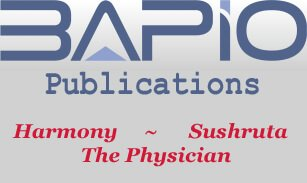Jobs, Finance & Careers
Consultant Gastroenterologists (2)
Employer: Barking, Havering and Redbridge University Hospitals Trust
Department: Gastroenterology
Location: Gastro Medical Staff, Romford
Salary:£79,860 to £107,668 per annum
Closing date 5/2/2020
About NHS Jobs
Around 25,000 posts are advertised on this website every month. If you're looking to begin or develop your career in the NHS, this site should be your first port of call.
WORKING TOGETHER
Opportunities to train and work in the UK
01
To apply check out the Academy of Medical Royal Colleges site;
Prospective Applicants
02
A collaborative development between the NHS, HEE, The Royal College of Radiologists, Apollo Radiology International and The University Hospitals of Morecambe Bay.
03
Working with a number of countries, responding to requests for support on workforce development, creating placements matching NHS workforce need with overseas training and seeking out new bilateral relationships
04
ISTP is a leading fellowship scheme which provides invaluable experience and career development opportunities for surgeons from low and middle-income countries.
CAREER OPPORTUNITIES
Making Sense of Pension Rules
David Belbin FCA DChA
(david.belbin@cbhc.uk.com) is a member of the ICAEW Healthcare Group and is the current chairman of the CharterGroup Healthcare Group and leads CBHC LLP’s
Specialist Health services team; Philip Redhead FCCA
(philip.redhead@cbhc.uk.com) is a partner in CBHC’s specialist healthcare team and has been working with healthcare professionals for many years; Neil Manning FCII
(neil.manning@cbhc.uk.com) is the partner who heads up our Wealth Management team providing solutions to our clients as they seek to manage their wealth through a portfolio of assets and provide protection in the event of unforeseen circumstances. CBHC
Accountants & Business Advisors, Chelmsford, UK
cite as: Belbin D, Redhead P, Manning N. Making sense of Pension Rules.
The Physician
2012 1(1) 56-57
Apart from the shared experience of long hours whilst training, the one thing that GPs in partnerships, single-handed, locums, salaried and NHS consultants have in common is membership of that national treasure, the NHS Pension Scheme.
What is the impact of the new rules on pension contributions to BAPIO members?
At the outset we should say that the effect is not straightforward and every reader will have a different outcome, so you should seek professional guidance. However, we set out below some pointers for your consideration.
Rule 1: The Maximum Annual Allowance
The basic rule is that the maximum pension saving in a year on which you receive tax relief is £50,000 and if you, or your employer, in total contribute more than this then you may pay a tax charge on the amount over the annual allowance. This includes both the NHS Pension Scheme and any other schemes which you may contribute to. Whether you have to pay a tax charge depends on whether you have unused annual allowances in the previous three years, for which
HMRC have also set the limit as being £50,000. A separate calculation would be needed for each year along the lines of that set out below. However for members of the NHS Pension Scheme, and other lifetime average or final salary schemes, this is made far more difficult because the savings figure is deemed as being the growth in your pension entitlement from one year to another, rather than the contributions you have actually made after adjustments have been made for inflation.
Each year to 31st March is treated as a Pension Input Period (PIP). The determining factors in deciding the size of your pension scheme entitlement, and hence whether you may be exceeding your Annual Allowance of £50,000, are your salary, which of course also determines the level of your employee and employer contributions, but more importantly the level of your pension along with the length of your membership of the scheme. Dynamisation of lifetime profits is also a major determinant for GPs. The higher your salary/profit share, and greater your length of membership, the greater the likelihood of your exceeding the Annual Allowance. Added years payments will further increase the value of your pension entitlement, and hence the year-on-year increase in pension entitlement. The biggest game-changer in this is of course when you get promotions or significantly increased pensionable profits.
The amount of tax that you will pay, if you are liable, is the increase in value of benefits over the PIP less the annual allowance, less any unused allowance from the previous three years, and will be payable at your to rate of tax. If this excess takes you into a higher tax bracket then you will pay the higher rate on part of it. If, for example, we take a doctor with an annual salary or pensionable profit of £120,000 for the year to 31 March 2011 and 20 years’ service, and then consider the situation if the pensionable income increased to £130,000 in the year to 31 March 2012, we would have the following calculation:
Rule 2: The Lifetime Allowance Charge
There is now a limit on the value of retirement benefits that can be drawn from any approved pension scheme, including the NHS Pension Scheme. From 1 April the lifetime allowance is £1.5m. (Between 2009 and March 2012 the Lifetime Allowance was £1.8m, and for those with benefit entitlements worth more than £1.5m there have been a series of elections that would have provided either enhanced, primary or fixed protection against additional charges to tax. These are beyond the scope of this article as they are not now available).
The value of your pension entitlement for these purposes is calculated as being 20 times the value of your pension entitlement plus the tax free lump sum payable on retirement. If your entitlement is in excess of the £1.5m (or more if you claimed protection), then should the excess be paid to you as a lump sum, tax would be payable as a one-off 55% recovery charge. If the chargeable excess is paid in the form of a pension, then 25% of the payment otherwise payable would be paid as penalty tax, with the remainder being subject to income tax in the usual way.
The reduced pension is payable for the whole of your life, and subsequent pension increases will only be applied to the pension after allowing for the lifetime allowance deduction. So in this example, if you had a pension of £75,000 and did not have protection then inflationary increases would be based on £72,188.
For those who have already retired from the NHS Pension Scheme but are still contributing to other schemes, the value of the NHS Scheme also has to be added to your other scheme for the calculation of your lifetime allowance. For these purposes the valuation is 25 times the annual NHS pension you are drawing.
You will need therefore to obtain an annual valuation from the NHS Pension Scheme in order that you can properly complete your tax return. There is no substitute for informed professional advice, and you should ensure that you seek advice from a suitably qualified advisor with experience in this field.




